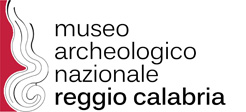The first Nativity scene for the Eternal City. The Nativity by Arnolfo di Cambio
The museum is the place where the historical memory and the cultural traditions of a territory are preserved, promoting awareness of one’s identity. The symbol par excellence of Christmas, that is the feast of the Birth of Jesus, is the Nativity scene. Therefore, the appointment at the MArRC is on Thursday, December 19th, 2019, at 5.00 pm, in Piazza Paolo Orsi, for the Conference on “The first Nativity for the Eternal City. The Nativity by Arnolfo di Cambio from 1291″, by restorers Giuseppe Mantella and Sante Guido.
The two professionals will illustrate, from the historical-artistic-cultural point of view and the recovery intervention they carried out in 2005, the first Nativity scene in Christian history: the representation of the Nativity in the sculptural-architectural complex in stone, attributed to the versatile Tuscan artist Arnolfo di Cambio – who is considered the Giotto of the sculpture – and dated 1291, in the Papal Basilica of Santa Maria Maggiore. This church, since the end of the Seventh Century and throughout the Middle Ages, has been called Sancta Maria in Praesepium, becauese it housed the sacred relics of the manger in which the Infant Jesus and the Baby bands were placed, becoming a place of pilgrimage such as the “Bethlehem of the West. “
The work was commissioned by Pope Niccolò IV, the first Franciscan pontiff, who wished to have a model of the Bethlehem Grotto that recalled the historical-theatrical representation of the Birth of Jesus made by St. Francis of Assisi in Christmas 1223 in Greccio by the help of the noble Giovanni Velita. At the end of the 16th Century AD, the crib by Arnolfo di Cambio was dismantled and recomposed in the crypt (now called the Sistine Chapel, like the one in the Vatican) created by the architect Domenico Fontana, at the behest of Pope Sixtus V; today it is in the crystal case designed by the architect Giuseppe Valadier, in the Nineteenth Century. The restoration work, curated by Guido and Mantella, restored to the massed forms of the crib the figure in the original Arnolfian style, of a visual effect of symbiosis between sculpture and architecture.
On the occasion of this Christmas 2019, Pope Francis has sent a piece of the Sacred Cradle as a relic as a gift to Nazareth, entrusted to the Friars Minor Custodians of the Holy Land.
“The crib by Arnolfo di Cambio is a true masterpiece of art, highly innovative at the time due to its exceptional three-dimensionality and polychromy, now largely lost”, Mantella explains. “The statue of Virgin, which has been believed to be a posthumous work for a long time, but has been instead created by the Tuscan artist himself, presents a particular delicacy and at the same time a sculpture expertise”. Guido continues: “It is the first crib in absolute, as a complex sacred representation. In the seventh century, with the fall of the Holy Land in the hands of the Arabs and with the first Arab invasion of the West, the first relics came from Bethlehem. Among these, also the cradle of the Nativity”. The crib by Arnolfo di Cambio consists of “five marble blocks, which depict Mary with the Baby in her arms, St. Joseph, the ox and the donkey together, two Magi kings standing in the same block and the last with the third king Kneeling magic”.

